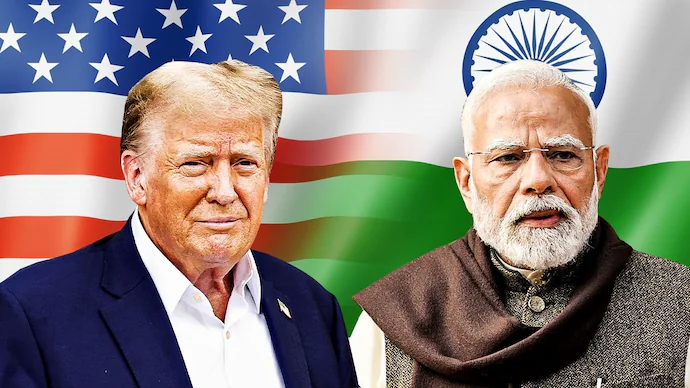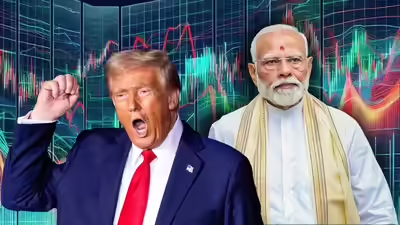Today, July 02, 2025, U.S. President Donald Trump’s backing of a Senate bill proposing a 500% tariff on India has ignited a firestorm, tied to India’s business with Russia. The move, spurred by concerns over India’s purchase of Russian oil amid the Ukraine conflict, threatens to upend the $190 billion trade relationship between the two nations. With negotiations for a $500 billion trade goal ongoing, is this a strategic lever or a misstep risking diplomatic fallout? Let’s dig into the unfolding drama.

The Tariff Trigger: Russia and Beyond
- Russia Connection: The proposed tariff targets India and China, which buy 70% of Russia’s oil, fueling its war machine, according to Senator Lindsey Graham. Trump’s support, voiced during a golf game, aims to pressure Moscow into peace talks.
- Trade Context: India’s $74 billion in 2024 exports to the U.S.—including pharmaceuticals and textiles—could face a massive hit, while the U.S. pushes for India to curb Russia ties.
- Policy Shift: This builds on Trump’s existing 26% “discounted reciprocal tariff” on India, announced in April, citing India’s 12% trade-weighted tariff as unfair compared to the U.S.’s 2.2%.
- Key Question: Is this about national security, or a bargaining chip in trade talks?
Economic and Diplomatic Stakes
- Economic Impact: Analysts estimate a $7 billion annual loss for India, with 87% of its $66 billion U.S. exports at risk, hitting sectors like jewelry and pharmaceuticals hardest.
- Diplomatic Tension: India’s External Affairs Minister S. Jaishankar has hinted at retaliation, while U.S.-India trade talks targeting a September 2025 deal face a potential derailment.
- Global Reaction: Posts found on X show mixed views—some back Trump’s stance on Russia, others warn of a broader trade war, with India exploring BRICS currency options.
- Insight: The narrative of “protecting America” may mask economic leverage, as India seeks to offset China’s manufacturing edge.

Challenges and Counterpoints
- Feasibility Concerns: The bill, set for August introduction, includes a carve-out for Ukraine supporters, but India’s neutral stance complicates its eligibility, raising legal and practical hurdles.
- India’s Defense: New Delhi argues its Russian oil buys stabilize global energy markets, not fund war, and its U.S. trade benefits outweigh tariff risks.
- U.S. Risks: A trade war could strain supply chains, with India’s semiconductor and renewable energy incentives attracting U.S. firms—potentially backfiring on American jobs.
- Speculation: Could this push India closer to Russia and China, or force a quicker U.S. trade deal?
A Trade Tug-of-War Unfolds
Trump’s 500% tariff threat on India over Russia ties is a high-stakes gamble, blending economic pressure with geopolitical messaging. While it aims to isolate Moscow, the real cost—diplomatic rifts and market chaos—remains unclear. Is this a masterstroke or a miscalculation?
Weigh in—should India shift from Russia, or is Trump overreaching? Share your view!






































